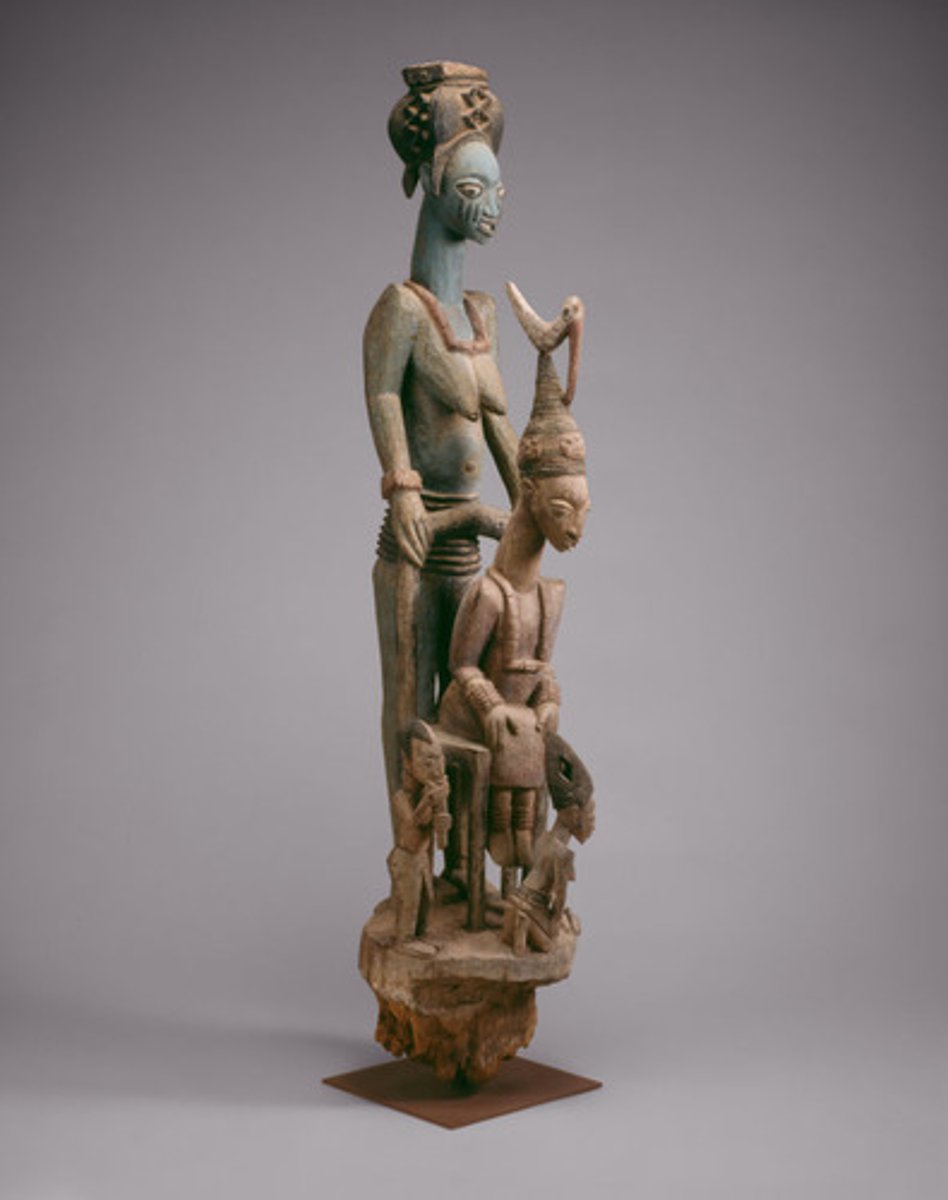African Art
1/14
There's no tags or description
Looks like no tags are added yet.
Name | Mastery | Learn | Test | Matching | Spaced |
|---|
No study sessions yet.
15 Terms
- Zimbabwe defrived from Shona term meaning "venerated houses" or "houses of stone"
- prosperous trading center and royal complex
- stone enclosure, probably a royal residence
- walls: 800 feet long, 32 feet tall, 17 feet thick at base
- conical tower modeled on traditional shapes of grain silos; control over food symbolized wealth, power, and royal largesse
- walls slope inward toward top, made of exfoliated granite blocks
- internal and external passageways tightly bounded, narrow, and long, forcing occupants to walk in single file, paralleling experiences in African bush
- tower resembles granary; represented good harvest and prosperity
Great Zimbabwe

- three tall towers, on in center is mihrab
- crowning ornaments have ostrich eggs: symbols of fertility and purty
- torons for permanent ladders for maintenance of building
- vertical fluting drains water off surfaces quickly
- largest mud-brick mosque in world
Great Mosque of Djenné
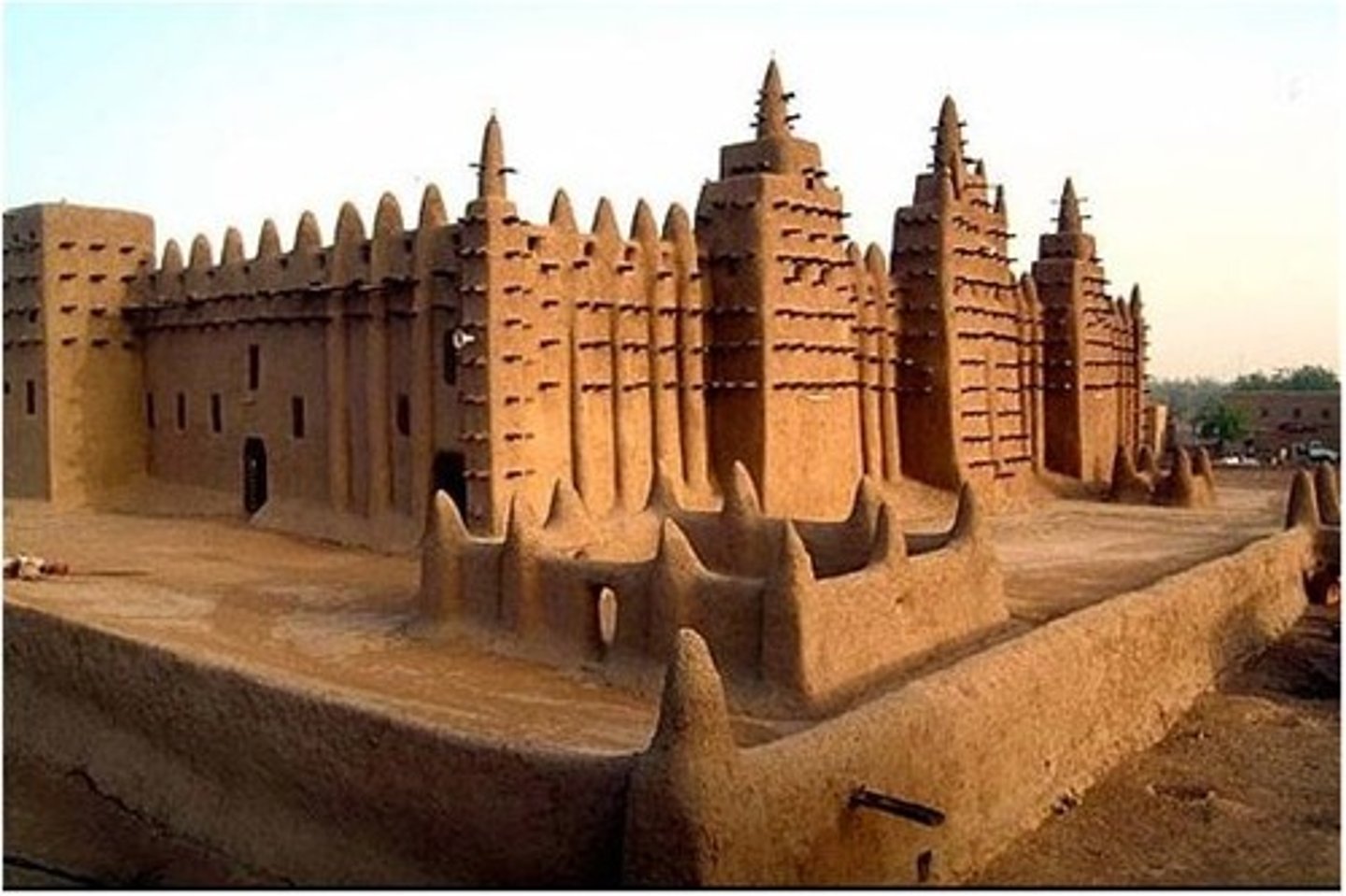
- 900 brass plaques produced; between 16 and 18 inches
- decorated walls of royal palace in Benin
- part of sprawling palace complex; wooden pillars covered w/ brass plaques
- shows aspects of court life in Benin culture
- Oba ("king") believed to be direct descendant of Oranmiyan, legendary founder of the dynasty
- only the Oba allowed to be shielded in way depicted on plaque
- hierarchical proportions
- symbols of high rank emphasized
- stepping on fallen leader
- emphasis on heads; bodies often small and immature
- lost wax process
- ceremonial scene at court
- high relief
Wall plaque from Oba's palace
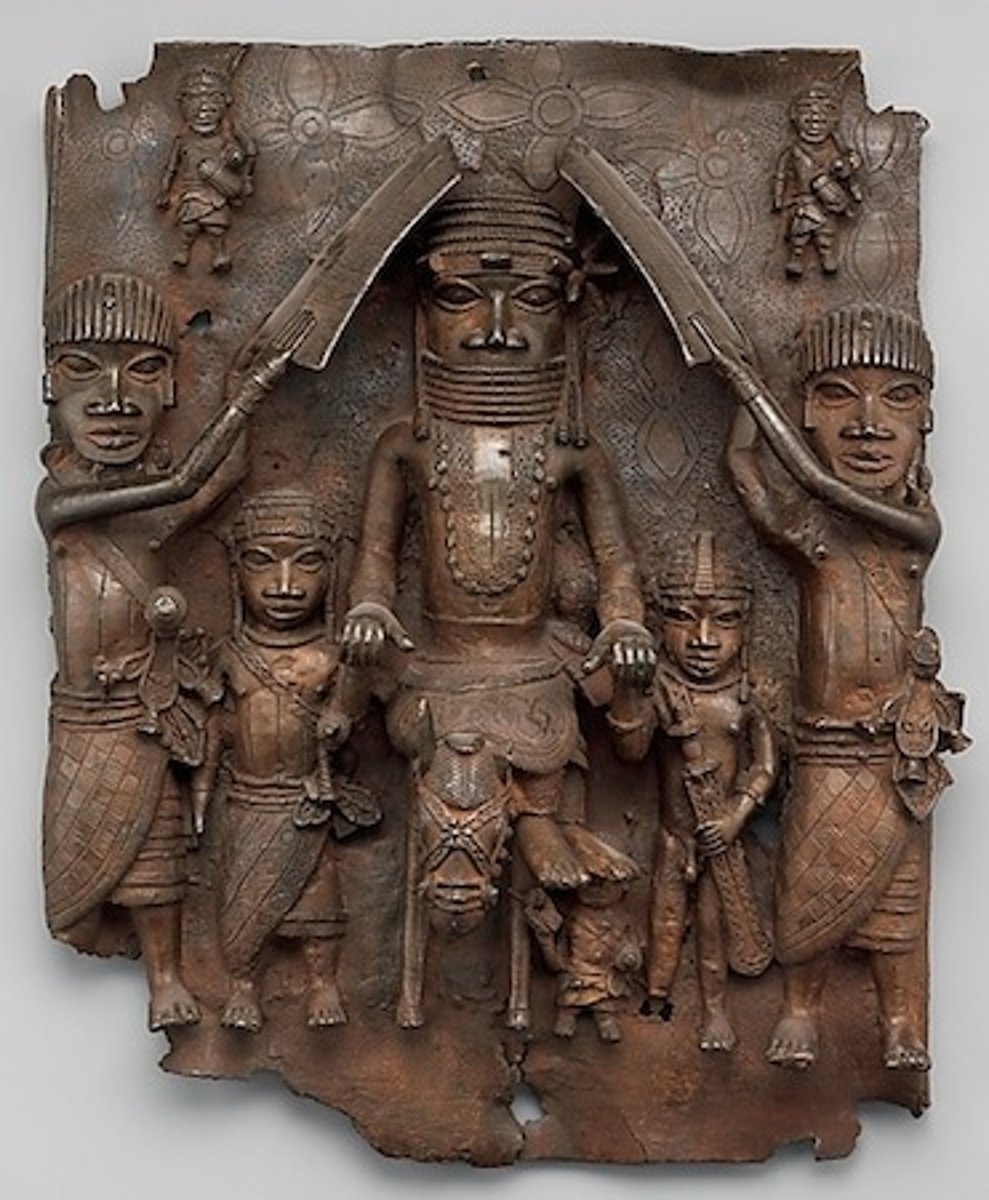
- symbol of Ashanti nation; held in Ghana
- contains soul of nation
- never used as a stool; not allowed to touch ground
- new king raised over stool
- carried to king on a pillow; he alone is allowed to touch it
- taken out on special occasions
- entire surface inland w/ gold
- bells hang from side to warn king of danger
- replicas often used in ceremonies, but each is different
- War of the Golden Stool: March-September 1900; conflict over British sovereignty in Ghana (formerly Gold Coast); British representative tried to sit; caused uproar and subsequent rebellion; ended in British annexation and Ashanti de facto independence
Golden Stool (Skia dwa kofi)

- commemorative portraits of Kuba rulers, represented in ideal state
- representation of deceased king's spirit; made after death
- each king commemorated by symbols on base of figure; this king has sword in left hand in non-aggressive pose, handle facing out
- one of earliest existing African sculptures; oldest ndop in existence
- rubbed w/ oil to protect from insects
- surrogate for king in absence
- kept in king's shrine w/ other works called a set of "royal charms"
- royal regalia: bracelets, arm bands, belts, headdress
- characteristics: cross-legged pose, sits on base; face seems uninvolved and above mortal affairs; peace knife in left hand
Ndop (portrait figure)
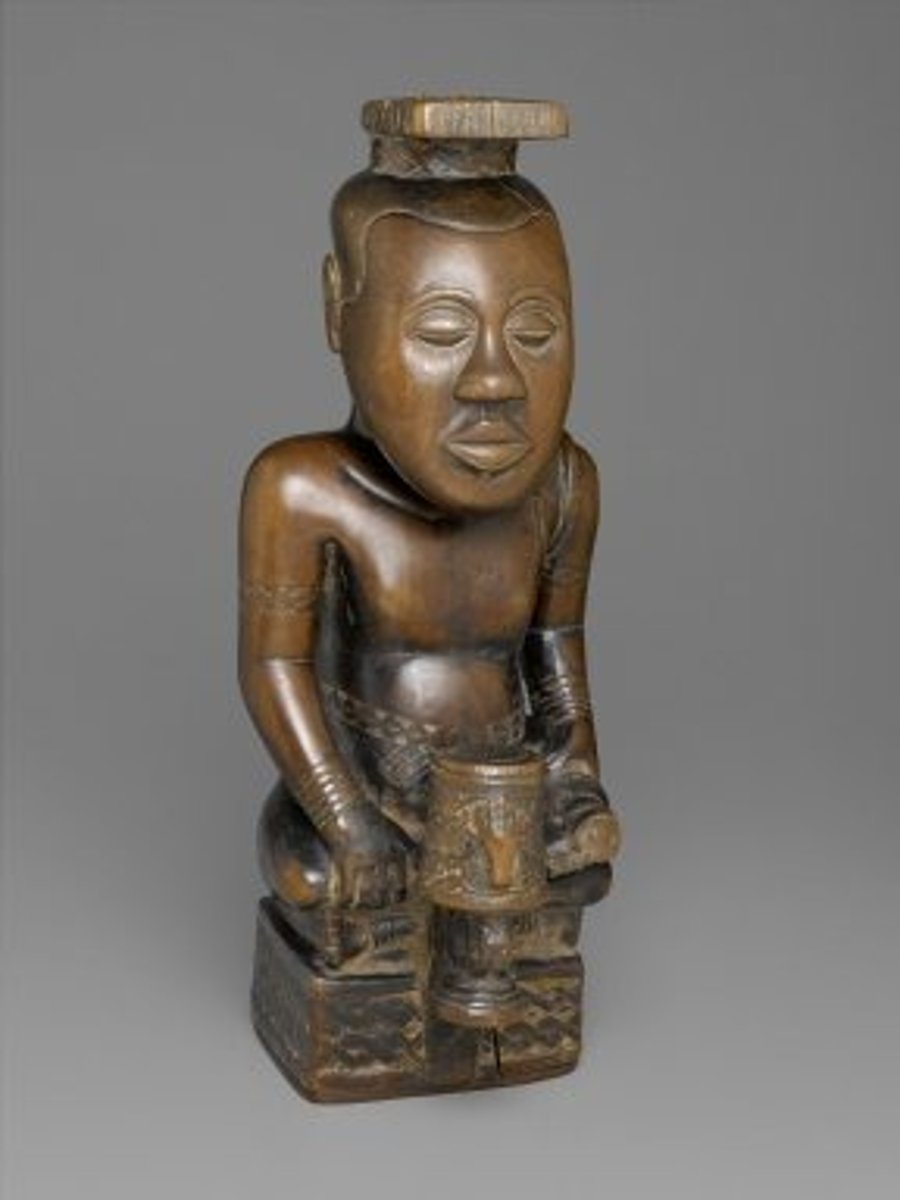
- photo of Kuba ruler enthroned wearing royal regalia: headdress, necklace of leopard teeth, sword, lance, drums of reign, basket
- made in 1971 capturing royal event
- continuous tradition of honoring a Kuba king
- costuming extremely elaborate; could weight 185 pounds, needed help to move; represents splendor of court, greatness, and responsibilities
- symbolizes ruler's wealth, status, power
- Kuba taste of accumulation of objects
- often buried w/ material after death
Kuba Nyim (ruler) Kot a Mbweeky II in state dress with royal drum in Mushenge, Congo
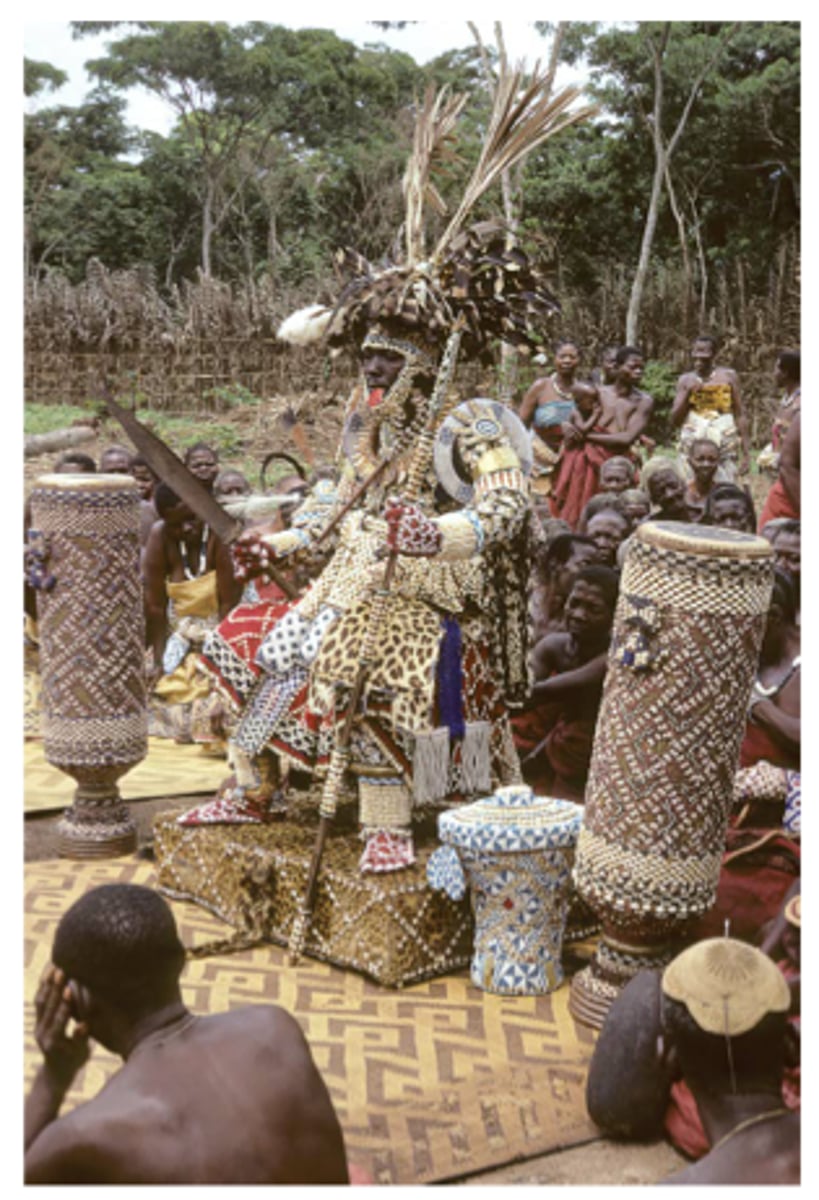
- spirits embedded in images; can be called upon to bless or harm others, cause death, or give life
- to prod image into action, nails and blades often inserted into work or removed from it
- medical properties inserted into body cavity, thought to be a person's life/soul
- nails pounded into figure
- alert pose
Power figure (Nkisi n'kondi)

- presented at Mblo performances where individual honored by having ritual dances and tributes are performed in someone's honor
- honoree receives mask as gift that reflects artistic double
- commissioned by group of admirers, not by individual
- dancer who wears mask and wears clothes of honored person accompanied by actual person during performance
- idealized representation of real person; not portrait in modern sense of the term
- portraits of real people, even if commemorative, are rare in African art
- broad foreheads, pronounced eye socks, column-shaped nose
- quiet faces; introspective looks; peaceful face; deditative; eyebrows in an arch
Portrait mask (Mblo)
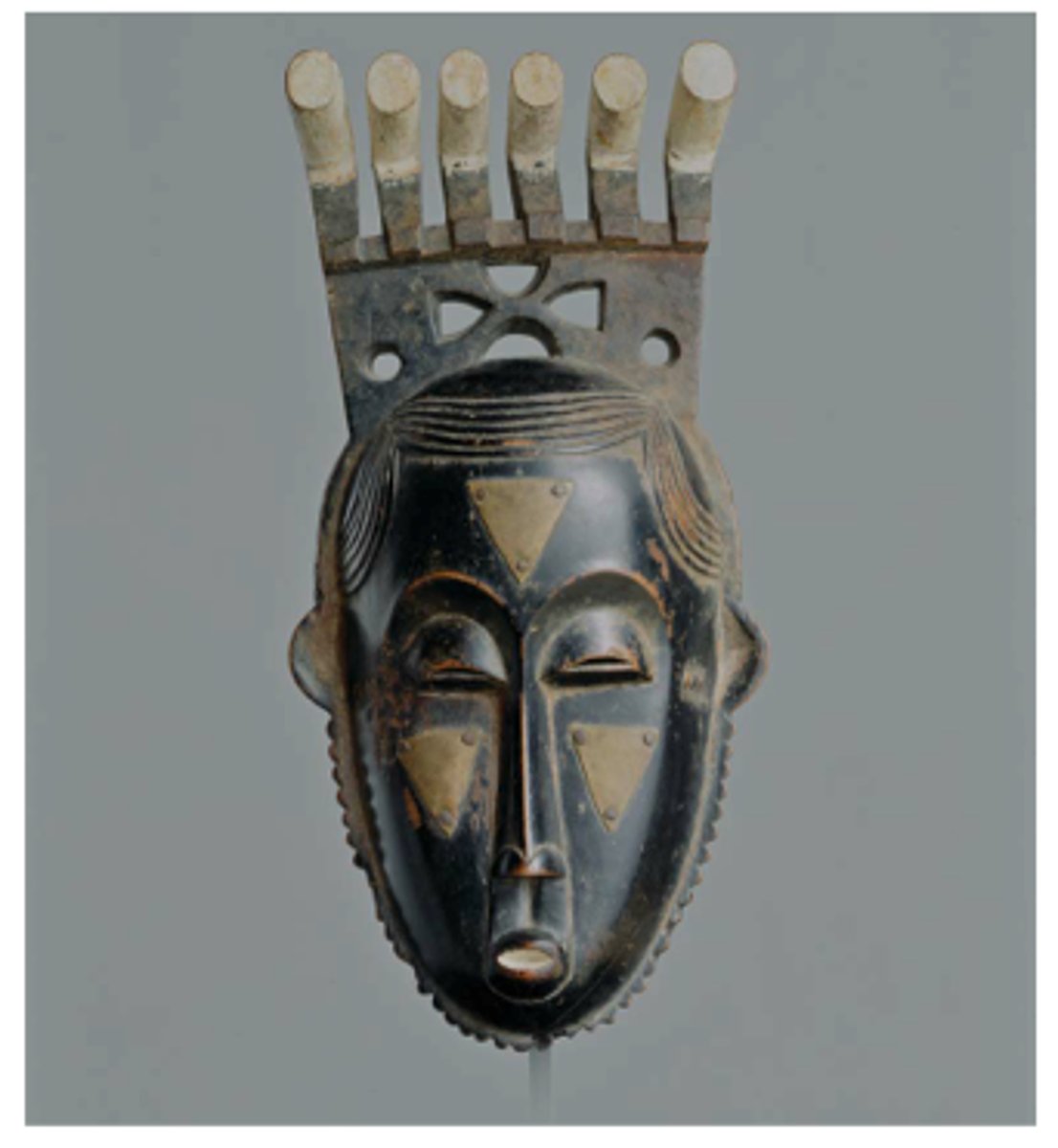
- female masks used by men in ritual dances; men covered w/ identities masked; dressed as women w/ braided hair
- ritual where men move like women
- Chokwe a matriarchal society
- depicts female ancestors
- discarded when not in use; can be buried w/ dancer
- characteristics: enlarged eye sockets; pushed-in chin; slender nose; high forehead; balanced features; almost-closed eyes
Female (Pwo) mask

- only African wooden masks worn by women
- idealized female beauty
- elaborate hairstyle symbolizes wealth; worn by men of status
- large forehead
- small eyes in shape of slits
- tight-lipped mouth symbolizing secrets not revealed
- Sande society: group of women who prepare girls for adulthood and their role in society
- costumed women war black gown made of raffia that hides the body
- costumed as a Sowei, water spirit; rings around neck symbolize concentric waves from which Sowi breaks through surface
- mask rests on head; head not placed inside
- coated w/ palm oil for lustrous effect
- black color symbolizes water, coolness, humanity
- individuality of each is stressed
Bundu mask

- "strong right arm" thus physical prowess
- honors right hand, which holds tools or weapons, makes sacrifices, conducts rituals, and alerts to speak at public forums
- traditional masculine associations of strength and potency
- carved from hardwoods considered masculine
- tells of owner's morality, prosperity, achievements, genealogy, social rank
- personal god of achievement and success
- requires blessings before use; consecrated w/ offerings before kinsmen
- enormous horns symbolize power
- as man achieves more success he might commission more elaborate version
- maintained in the man's home; destroyed when owner dies; another man can reuse it if not destroyed
Ikenga (shrine figure)

- helps user remember key elements in a store: court ceremonies, migrations, heroes, kinship, genealogy, lists of kings
- carved from wood in hourglass shape, then adorned w/ shells, beads, or metal
- reader holds in left hand and traces designs w/ right index finger
- back resembles tortoise
- reading example: one colored bead can stand for an individual; large beads surrounded y smaller beads ins king and court; lines of beads journeys/paths
- each board's design unique and represents divine revelations of a spirit medium expressed in sculptural form
- controlled by mbudye: council who interpret political/historical aspects of Luba society
- zoomorphic elements symbolize crocodile; dual nature metaphor for Luba's political organization w/ two interdependent leaders: kakungulu (head of mbudye) and kaloba ("owner of the land"; chief)
Memory Board (Lukasa)
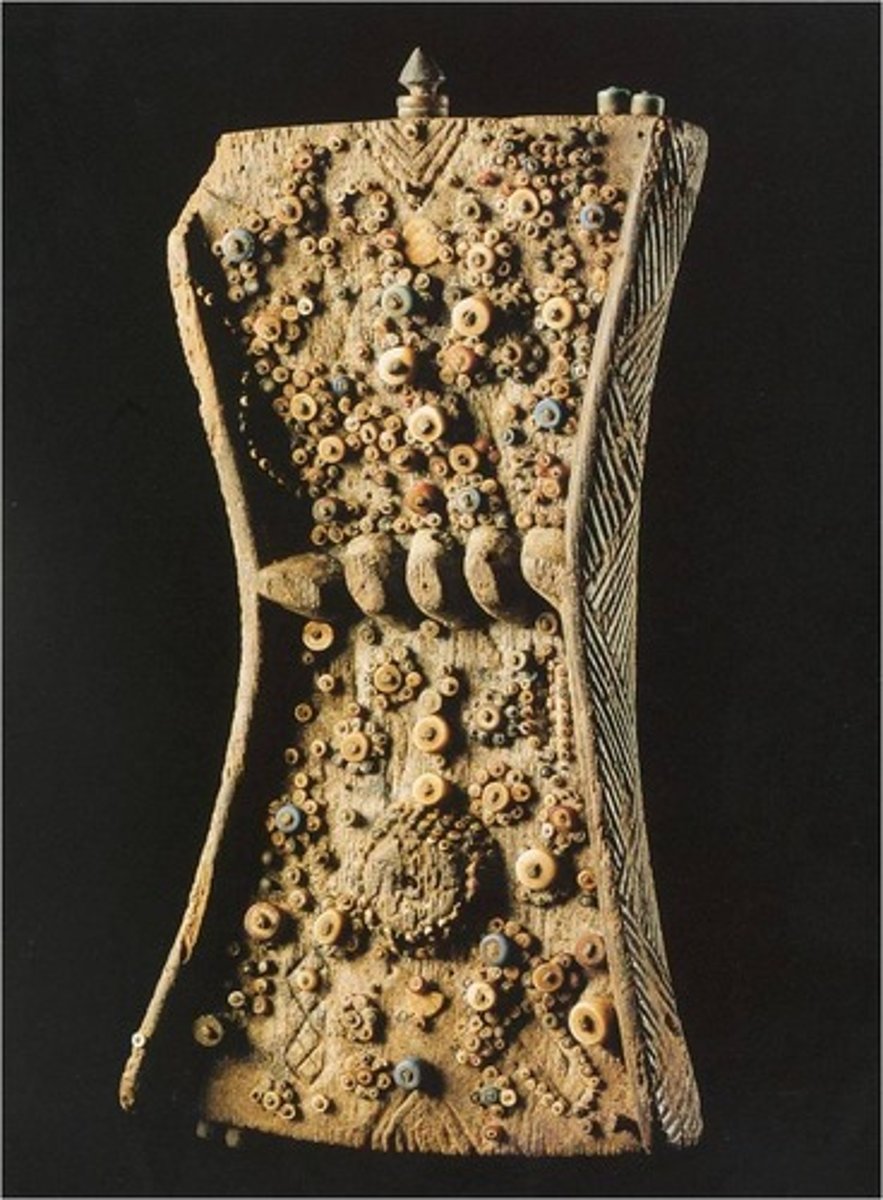
- only important people in society can own and wear aka; used at a royal court
- elite Kuosi masking society owns and wears the masks; worn on important ceremonial occasions
- beadwork symbol of power
- symbolizes features of an elephant: long trunk, large ears ( symbolizes trunk and power)
- fits over head and two folds hang down in front and behind body
- human face
- maskers dance barefoot to a drum and gong; wave spears and horsetails
Aka elephant mask
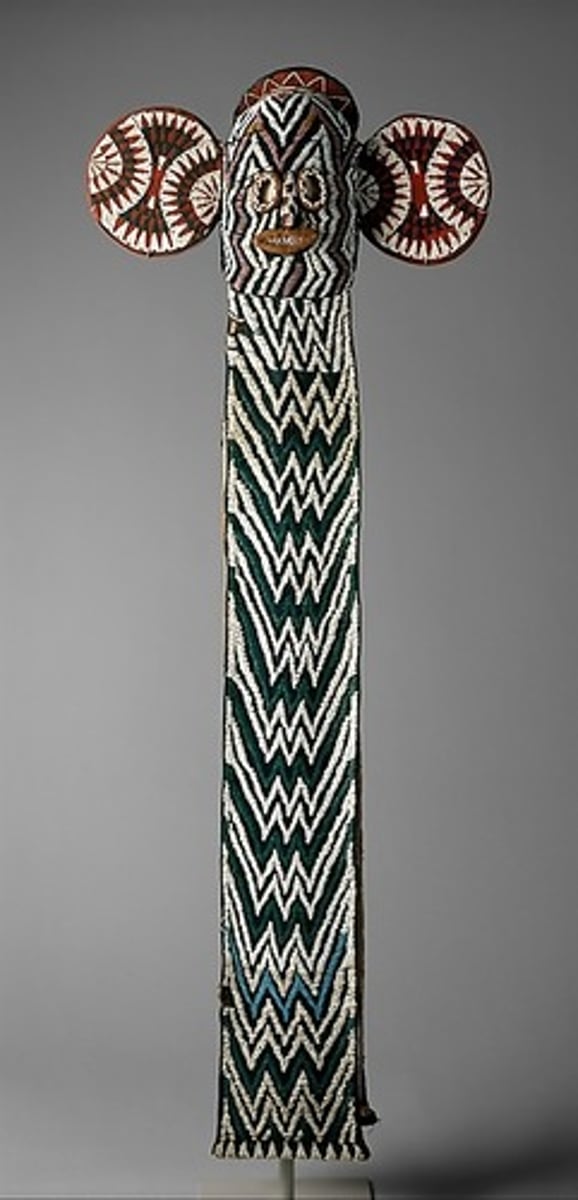
- placed on top of cylinder-like containers made of bark that hold bones of important clan leaders
- feet dangling over rim in gesture of protecting contents against gaze of women or young boys
- composed of characteristics Fang people place high value on: tranquility, introspection, vitality
- surfaces ritually rubbed w/ oils to add luster and protect against insects
- prominent belly button and genitals emphasize life; prayerful gesture and somber look to emphasize death
- abstraction of human body an attraction for early 20th century artists
Reliquary figure (bieri)
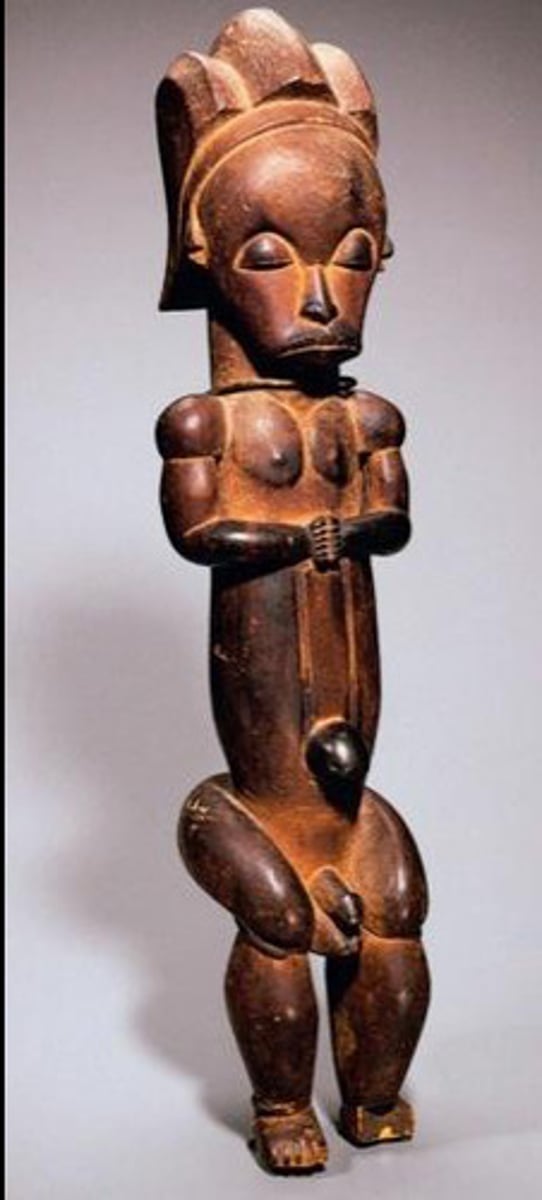
- Olowe of Ise carved posts for rulers of Ekiti-Yoruba kingdom in Nigeria
- one of four carved for the palace at Ikere
- negative spaces create openness
- king focal point in relationship between his figures and others presented on this post
- behind: large-scale warrior wife supporting throne; crowns king during coronation; protects him during his reign
- small figures: junior wife; flute player is Esu, trickster god; a now-missing fan bearer
- most posts painted; traces of paint remain
Veranda post of enthroned king and senior wife (Opo Ogoga)
